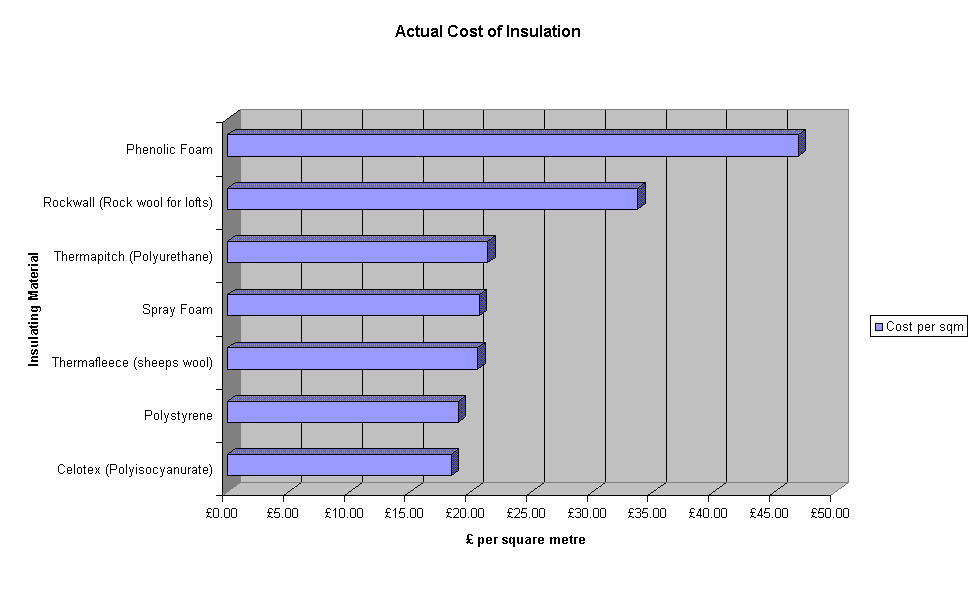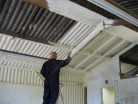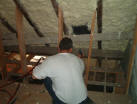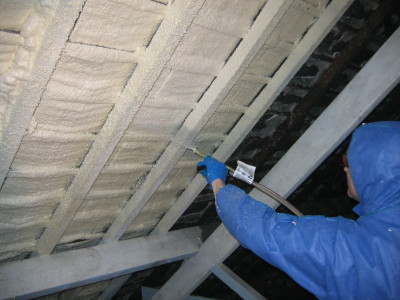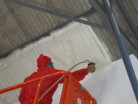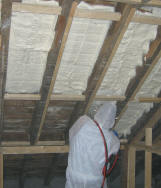Loft Insulation Materials - ComparisonThere are many insulating materials suitable for loft and attic insulation. This page compares the most common types of insulation. For most people, two issues matter the most, these being:
Other issues, which might influence the choice of material are issues like:
R values, K values & U values explainedIf you have started looking at all the different kinds of insulation available, you will probably have come across references to R values, K values & U values. What do these terms mean and why are they important? R values and K values are closely related in that they are different representation of the inherent insulating ability of the material. Put another way, they describe how good a conductor of heat the material is. Obviously for insulation you want a poor conductor so that heat is retained in the building. The K value or thermal conductivity is usually measured in Watts per metre per degree celcius (Kelvin to be 100% correct) abbreviated as W/m.k ;The lower this number, the better the insulator. R values are used more in the United States than in the UK and is simply 1 divided by the k value and measures the resistance to the transfer of heat through the material. The higher the R value the better the insulator. This brings us to the bit that the Building Regulations always talk about, the U value. The U value is actually a measure of the overall ability of a wall/roof/floor to prevent heat loss, and is measured in watts per square metre per degree celcius (kelvin) and is abbreviated as W/m2.k The U value takes into account all the k values of the various parts of the roof/wall structure, as well as the factors which determine the transfer of heat from inside the room to the roof, and from the roof to the outside air. You may have noticed that the U value is given per square metre whereas the K value is only determined by the thickness of the material. This is one of the reasons why the building regulations refer to the U value. For example, a pitched roof has more surface area than a flat roof, and will lose more heat than a flat roof even if they have the same insulation material and thickness. This is why thicker insulation is required in pitched roofs to achieve the same U value Cost of InsulationThe actual cost of an insulating material depends on several factors. The first is the amount required to achieve a particular insulating level (some are better insulators than others). The second factor is the cost of installation. Some materials have to be cut to size and fixed in place. This adds to the time and cost of installation. The following chart compares the insulating efficiency of common insulation material available in the UK and shows how thick various materials need to be to achieve the same insulation level: (click on graph to view enlarged image) As you can see from the chart, some materials like Rockwool, need to be twice as thick as foams like phenolic, polyisocyanurate & spray foam (polyurethane). Cost Comparison of Insulating MaterialsThe following chart gives an indication of typical material costs of the various common insulating materials on an equal insulation basis. In other words, costs have been adjusted to reflect the fact that some materials need to be thicker than others. (click on graph to view enlarged image) Installation of InsulationInstallation of the insulating material is an important consideration, as not everyone has the skills to accurately cut large pieces of insulation. With the exception of spray foam insulation, all loft insulating materials need to be fixed into place with supports, or cut so accurately that they are a tight fit (and hold themselves in place). Rolls of insulation e.g. Fibreglass & Rockwool rolls are not designed for pitched roof of wall insulation, but rather for placing on top of ceilings to insulate the room below. Rolls are often confused with Rockwool batts and boards, which are designed for these applications. Time taken to install insulation varies considerably. Foam Sheets and insulation batts are great for large areas, where the distances between joists are standard sizes or where shapes are rectangular, but imagine the nightmare involved with cutting insulation pieces for this barn conversion:  Spray applied insulation foam would provide the quickest way to insulate this type of structure Insulation efficiency information (k values) used on this page were obtained from manufacturer's websites. Costs of common insulation materials are based on published prices at two large building merchants (Travis Perkins & Build-Center) |
|

